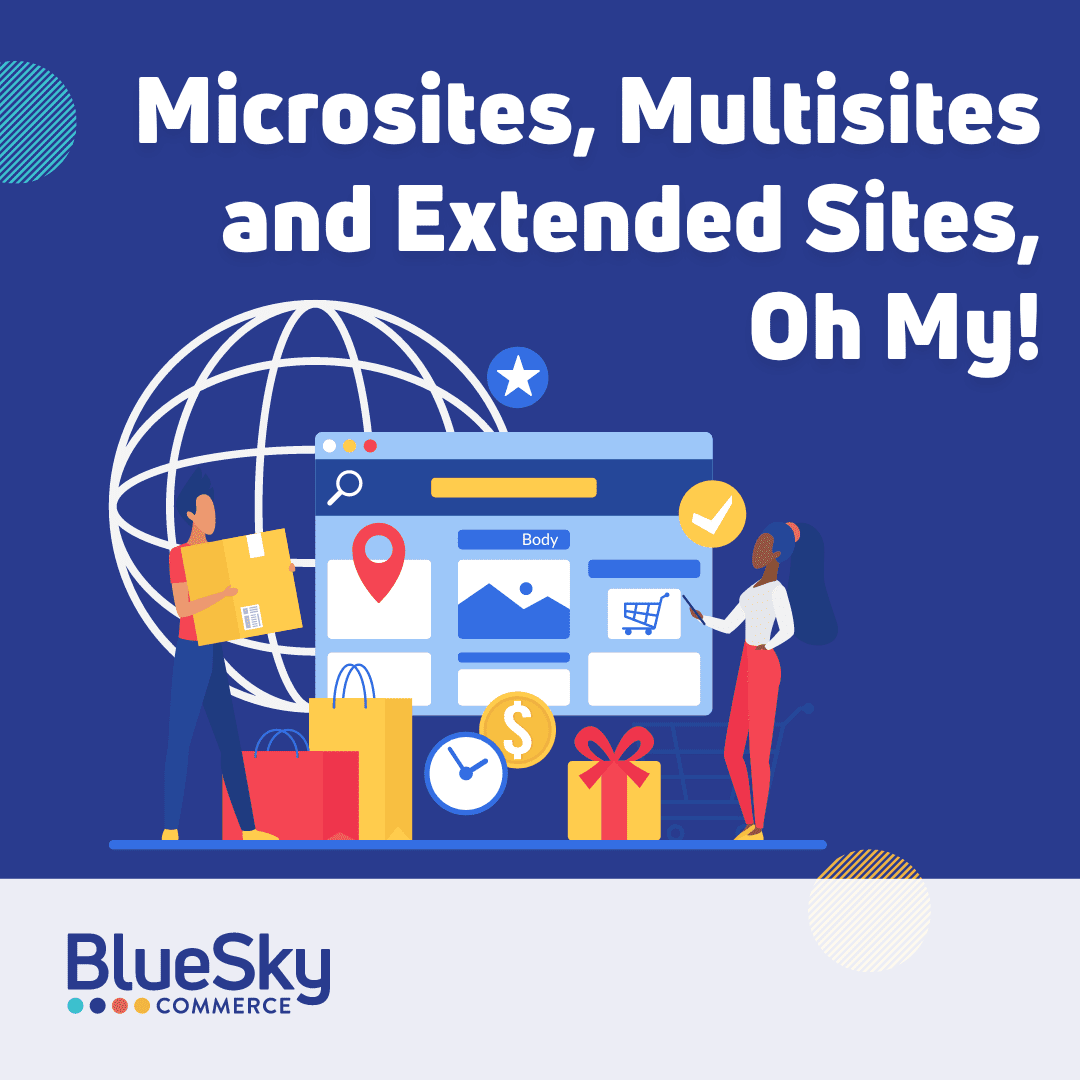In the e-commerce world, a microsite, multisite, or extended site has many interpretations or definitions. Collectively, we will refer to them as an “e-site,” which in general describes the idea of having multiple websites that address different business needs in an effort to increase overall customer usability and e-commerce sales.
There are many reasons to create e-sites including:
- Regional E-commerce
- To address regional or international differences like languages, currencies, laws, shipping limitations and financial accounting, a business may want different versions of their e-commerce website for different areas they sell in.
- Product Line and Branding
- As a business that owns or sells multiple product lines and brands, creating a separate, dedicated site is a way to spotlight these products. It also gives the ability to hit on the brand story and message to create a more immersive experience that a larger general e-commerce site can not.
- Personalized Shopping Experiences
- Does your business have distinct and important customer groups? E-sites are a great way to cater to these experiences. Retail customers shop differently than corporate customers, and loyalty members may want to shop your points catalog, for example.
- “Beta” Site for A/B Testing Designs and Content
- Leveraging an e-site as a pilot or test bed for new website designs or content allows the business to try something quickly without affecting the main e-commerce site.
With all of these great reasons to use e-sites, why don’t we see more of them? The answer is simple: cost.
Many e-commerce solutions are just not built with business growth and e-site support in mind. So when the business looks to create a new e-site, IT inevitably responds with a 6 to 8-month timeline and the cost of a small home to implement a totally separate, second e-commerce site, copying everything from the original to start from. That’s just for the initial implementation. Ongoing maintenance costs and total cost of ownership also grow as features, bugs, backup, and support compound for every e-site.
Avoiding this situation, unfortunately, requires some planning and forethought when choosing backend and frontend solutions for your e-commerce implementation.
Select a backend e-commerce platform that supports e-sites. HCL Commerce and BigCommerce are good places to start. These platforms allow businesses to manage multiple sites within a single instance and share data like products and marketing content to ensure operational efficiency.
It’s also important for the frontend to support e-sites and update them easily. This means that the same instance of the frontend should be able to adapt its products, content, look and feel, features, and entire experience dynamically based on what store or site it is displaying. The frontend logic should be driven by data and configuration, not hard-coded rules. This allows new e-sites to be quickly implemented without much development effort.
Evolve Storefront is an enterprise-level, production-ready headless storefront ready to handle as many e-sites as you can create. Once created, customize your experience as little or as much as you like, all via configuration and no development effort. Do things such as:
- Change the look and feel with themes, colors, and favicons
- Show your e-sites to be on the same domain as your main site (https://shop.example.com/my-site) or a totally different domain (https://my-site.example.com)
- Enable and disable storefront features like wish list, store locator, product compare, and more!
- Separate the tracking of web traffic in Google Tag Manager and Google Analytics 4.
Have questions on how e-sites can work for you? Ready to jump in and Evolve? Schedule a meeting or demo of Evolve Storefront today.





